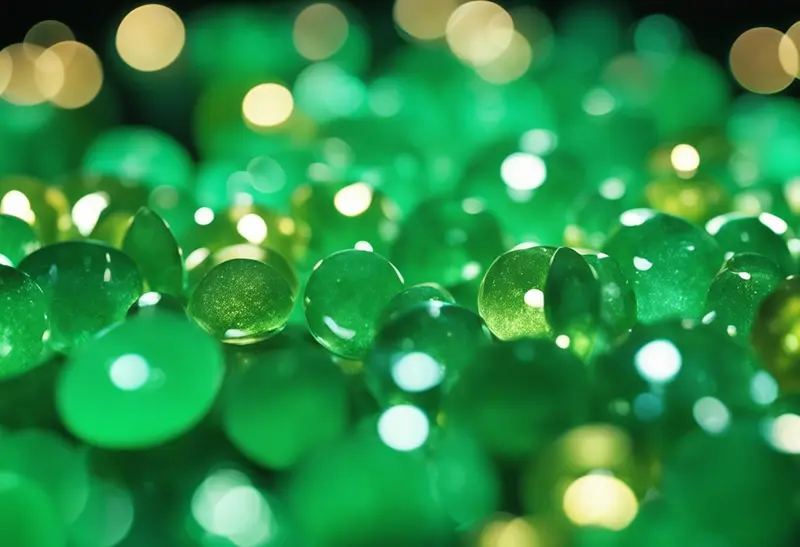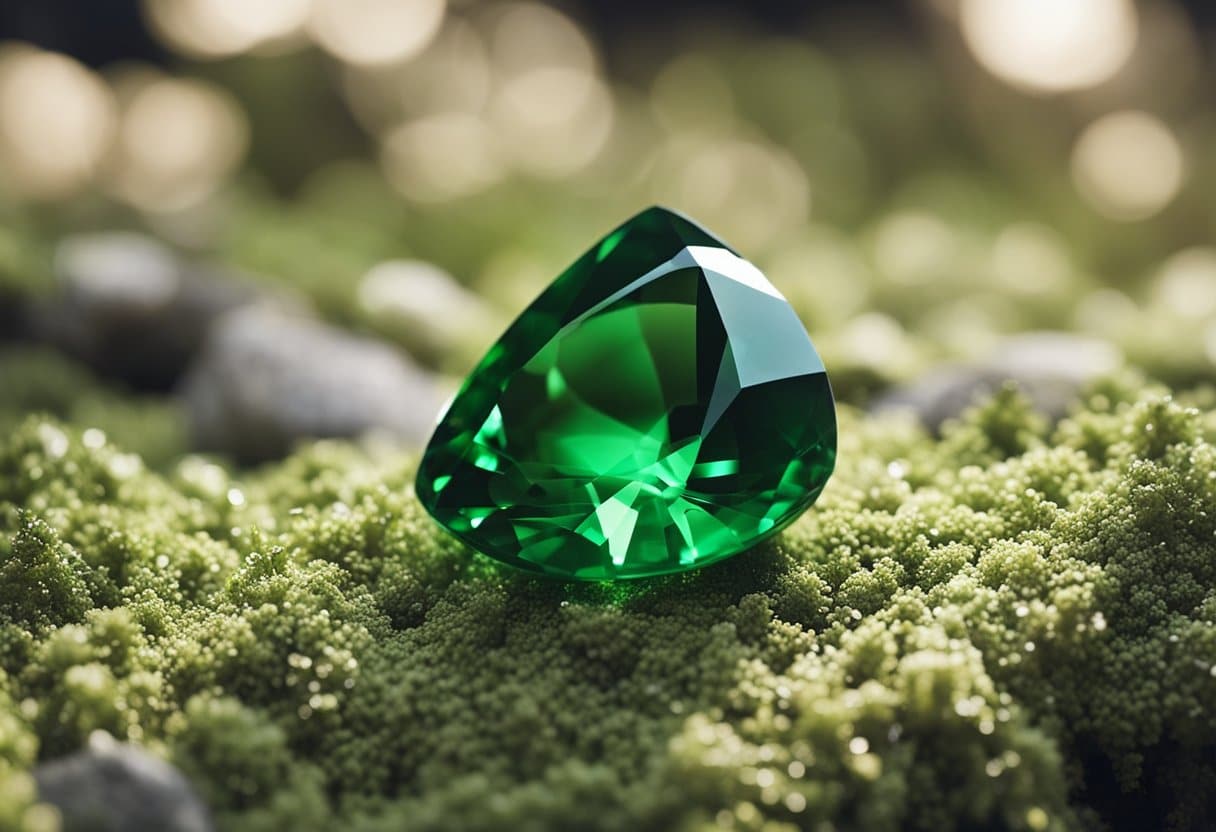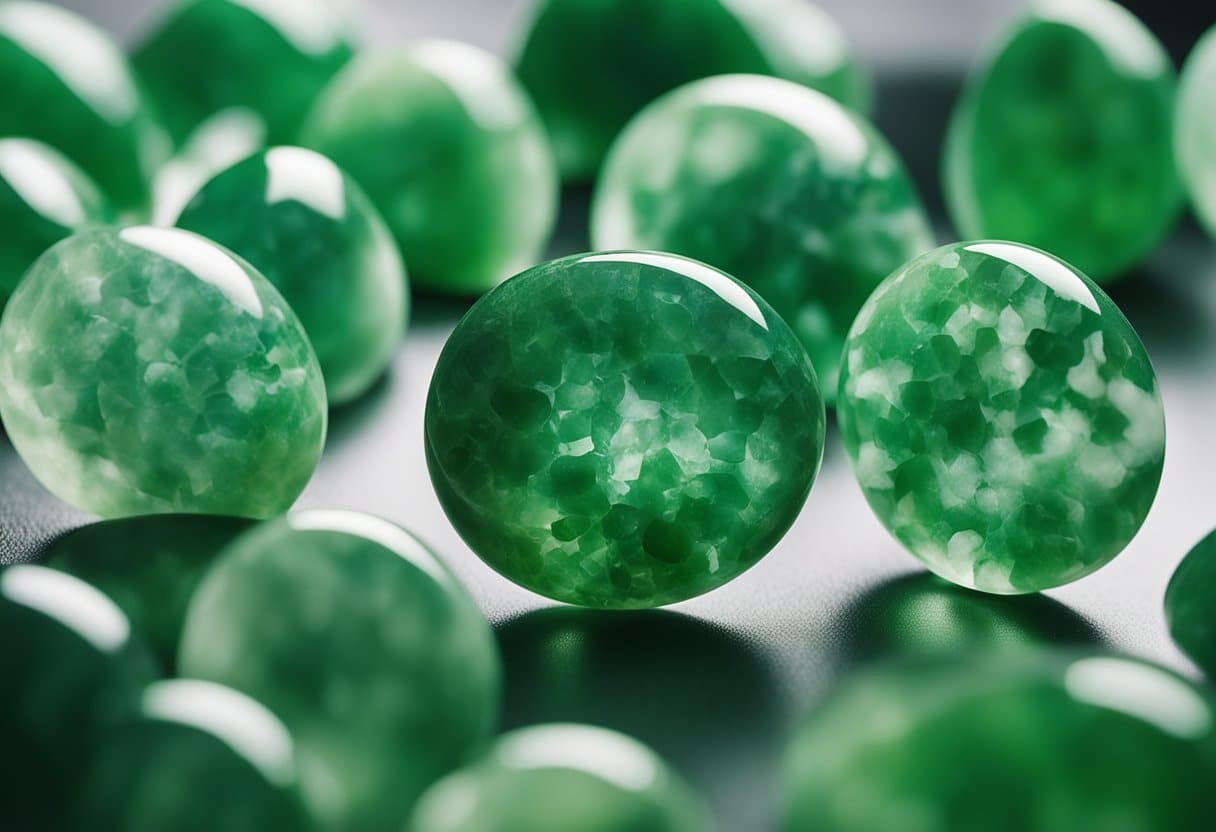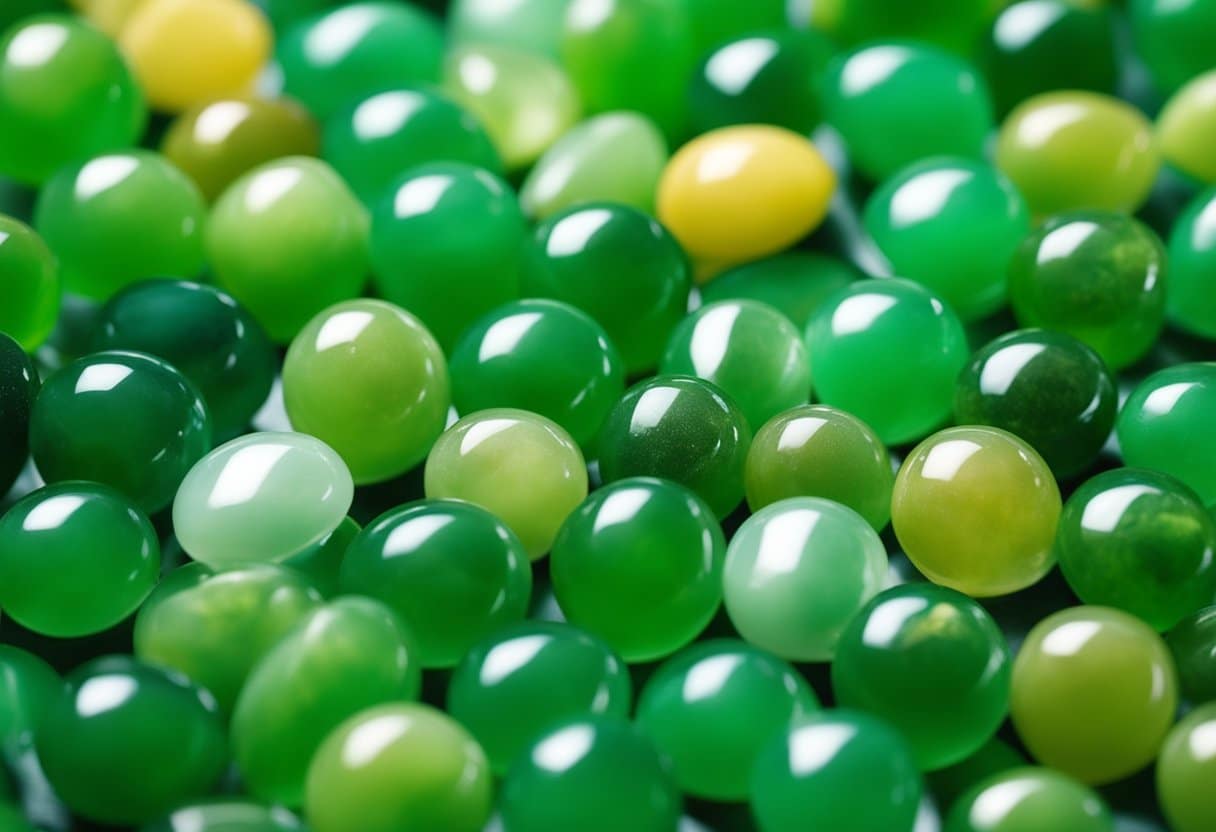Jade is a precious stone that has been prized by many cultures throughout history. It is a symbol of beauty, strength, and good fortune.
In the Bible, jade is mentioned as one of the precious stones that adorned the breastplate of the high priest.
However, the symbolic meaning of jade in the Bible is still a subject of interpretation and exploration.

Jade is a mineral substance that has been used for utensils and ornaments by early humans. It comes in various colors, ranging from nearly white to dark green.
Jade is not explicitly mentioned by name, but there are several passages that describe stones and gems, which could potentially include it.
The symbolic meaning of jade in the Bible is often associated with the tribe of Judah, which was represented by a precious stone on the breastplate of the high priest.
Historical Context of Jade
Jade has been a highly prized material in many cultures throughout history.
In China, it has been used for over 5,000 years, with the earliest known carvings dating back to the Neolithic period.
It was considered to be the “imperial gem” and was used to create many intricate carvings and objects during the Shang and Han dynasties.
There are two types of this stone: jadeite and nephrite. Nephrite is the more common of the two and was the type of jade used in China.
Jadeite, on the other hand, was not introduced to China until the 18th century. Jadeite is a harder and denser material and is therefore more valuable than nephrite.
Jade was often carved into various shapes and objects, including figurines, vases, and other decorative items.
These carvings were often highly detailed and intricate and were considered to be works of art.
It is believed that this stone symbolizes good fortune and knowledge, and is considered to be a powerful, holy stone.
Jade in the Bible

Precious Stones in the Bible
Precious stones are frequently mentioned in the Bible, and they were highly valued in ancient times.
In the book of Genesis, they are mentioned as being a part of the Garden of Eden. Throughout the Old Testament, precious stones are used to decorate the breastplate of Aaron, the high priest.
In the book of Exodus, it is described how God instructed Moses to create a breastplate with twelve stones, each representing one of the twelve tribes of Israel.
Jade as a Symbol in the Bible
While the Bible does not mention it by name, it is believed that the stone was one of the precious stones used to decorate the breastplate of Aaron.
According to some interpretations, the jade stone represents the tribe of Benjamin.
Jade has been associated with good fortune and knowledge in the Bible. It was also used in rituals and was considered to be a powerful, holy stone.
In the New Testament, precious stones are also mentioned in the context of the foundation of the New Jerusalem.
The King of Tyre is also mentioned in the Bible as being skilled in working with precious stones.
In the book of Corinthians, the Apostle Paul uses the metaphor of precious stones to describe the building of the Church.
Jade is associated with good fortune and knowledge, and it is considered to be a powerful stone in the context of ancient rituals.
Symbolic Meanings of Jade

This gemstone has been a symbol of many things throughout history, including in the Bible.
In this section, we will explore some of the symbolic meanings of jade.
Jade and Yin
Jade is often associated with the concept of yin, which represents feminine energy and the passive side of nature.
The stone’s gentle and calming energy is said to promote a sense of serenity and gentleness, which aligns with the yin energy.
Jade and Balance
It is believed that the stone promotes balance and harmony in eternal life. It is said to help balance emotions and promote a sense of inner peace.
The green color is associated with growth and renewal, which can help bring balance to one’s life.
Jade and Healing
Jade is known for its healing properties. It is said to promote physical healing, especially for the heart and kidneys.
It is also believed to help with fertility and childbirth. The stone’s purity and gentleness are said to promote healing and renewal.
Jade and Prosperity
This gemstone is often associated with wealth and prosperity. In feng shui, jade is believed to attract abundance and good luck.
The stone’s qualities of wisdom and virtue are said to help attract prosperity and success.
Its spiritual and healing properties, as well as its association with prosperity and good luck, make it a valuable and highly sought-after stone.
Types and Colors of Jade

Jade is a precious gemstone that comes in various types and colors. Each type and color of it has its own unique symbolism and meaning.
In this section, we will explore the different types and colors and their significance.
Green Jade
Green jade is the most common and well-known type of jade. It is frequently associated with growth, harmony, and balance.
In the Bible, green jade is often used as a symbol of resilience and strength. It is also believed to bring good luck and prosperity to its wearer.
White Jade
White one is a rare and highly valued type of jade. It is usually associated with purity, innocence, and spirituality.
In the Bible, white jade is often used as a symbol of righteousness and holiness. It is also believed to bring peace and tranquility to its wearer.
Black Jade
Black jade is a dark and mysterious type of jade. It is often associated with protection, grounding, and stability.
In the Bible, it is often used as a symbol of power and authority. It is also believed to ward off negative energy and evil spirits.
Red Jade
Red jade is a vibrant and energetic type of jade. It is often associated with passion, courage, and vitality.
In the Bible, it is frequently used as a symbol of love and devotion. It is also believed to enhance one’s life force and creativity.
Grey and Yellow Jade
Grey and yellow ones are less common types of jade. Greystone is often associated with wisdom, clarity, and insight.
Yellow jade is often associated with joy, happiness, and optimism. Grey and yellow pebbles are not explicitly mentioned by name, but their symbolism aligns with the biblical themes of wisdom and joy.
Jade in Other Cultures
This type of gemstone is not only significant in the Bible but also in many other cultures around the world.
Now, let’s research the symbolism and significance of jade in Asian cultures and New Zealand.
Jade in Asian Cultures
In Asian cultures, the stone has been popular for thousands of years. In China, it is associated with prosperity, good luck, and longevity.
It is believed to have healing properties and can protect the wearer from negative energy.
In addition to China, jade is also significant in other Asian cultures such as Japan, Korea, and Vietnam. In these cultures, it is linked with purity, wisdom, and the natural world.
Jade in New Zealand
Jade, known as pounamu in New Zealand, is significant in Maori culture. It is believed to be a connection to the natural world and ancestral spirits.
It is repeatedly carved into intricate designs, such as the traditional Maori neck pendant, and hei-tiki.
These carvings are considered taonga, or Heavenly treasures, and are passed down through generations.
Pounamu is also significant in Maori rituals and ceremonies.
Jade in Metaphor and Alternative Medicine
This beautiful stone has been used in alternative medicine for its healing properties. It is believed to possess soothing effects and can aid in the healing of physical and emotional wounds.
In the Bible, God is referred to as the ultimate healer and restorer, and jade’s healing properties may be seen as a symbol of God’s healing power.
It has also been used as a metaphor for good fortune and knowledge.
In Spanish, the phrase “piedra de jade” translates to “jade stone” and is used to refer to a person or thing of great value or importance.
In English, the phrase “jade figurine” is used to describe someone who is worn out or exhausted, implying that they have lost their value or significance.
But, it is not explicitly mentioned by name, but it is believed to have been one of the gemstones used to construct and decorate altars.
As such, it may be seen as a symbol of the importance of worship and the sacredness of religious rituals.
Conclusion
As we can see, jade is a precious stone that symbolizes happiness, beauty, purity, and wisdom.
Although this gemstone is not explicitly mentioned in the Bible, it is believed to represent one of the 12 tribes of Israel that was featured on the breastplate of the high priest.
The symbolic meaning of jade in the Bible has been a subject of exploration and interpretation.
There are several paths that describe stones and gems, which could potentially include this particular pebble. The use of precious stones in the Bible is often associated with the glory of God and His people.
Its unique properties and beautiful appearance make it a popular choice for jewelry and other decorative items.
Frequently Asked Questions
What is the significance of jade in biblical times?
Jade was used by early man for utensils and ornaments, as mentioned in the Bible (Exodus 28:18; 39:11; Ezekiel 28:13).
It was highly valued for its toughness, durability, and beauty. In biblical times, it was also used as a symbol of strength, prosperity, and good fortune.
What is the meaning of the precious stone mentioned in Exodus 28:20?
Exodus 28:20 mentions a precious stone called “chrysolite,” which is believed to be a type of jade. It was one of the twelve stones on the breastplate of the high priest of Israel.
The stone was associated with the tribe of Naphtali and was believed to represent the tribe’s strength and resilience.
What is the spiritual significance of jade in Christianity?
In Christianity, the stone is often associated with the virtue of humility.
It is accepted that the stone’s natural beauty and strength remind Christians of the importance of being humble and faithful to God.
The stone is also associated with wisdom, peace, and spiritual growth.
What is the connection between jade and heaven in spiritual beliefs?
In many spiritual beliefs, including Christianity and Taoism, jade is believed to represent heaven and the divine.
The stone’s natural beauty and strength are seen as a reflection of the divine qualities of purity, wisdom, and compassion.
Besides, jade is believed to have a protective energy that can help to ward off negative influences and promote spiritual growth.
